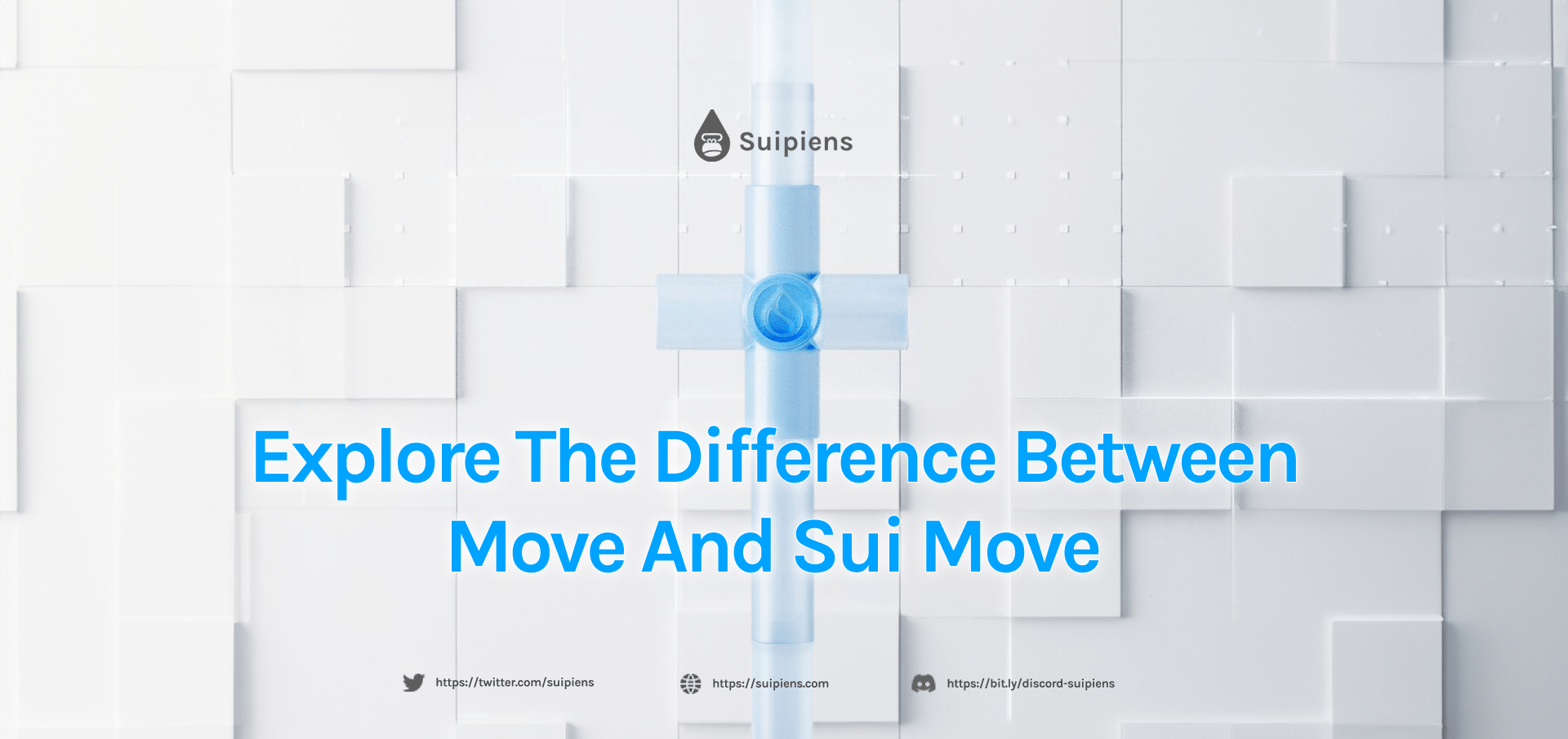Explore the Difference between Move and Sui Move

Let's discover the differences between Move and Sui Move in blockchain programming with our simple comparison of these two powerful languages.
In the vast world of blockchain technology, the Sui Network stands out with its native programming language, Sui Move. This language's brilliance lies in its ability to leverage Sui's consensus mechanism, resulting in impressive transaction performance for apps developed using Sui Move. However, for developers who are familiar with the Move programming language, diving into the Sui documentation might seem a bit puzzling. Fear not, as this article is here to illuminate the core distinctions between the two languages, with a special focus on Sui Move's innovative object-centric data storage model.
The Birth of Move
The Move programming language was first crafted by Sam Blackshear, Co-founder and CTO of Mysten Labs, for the Diem blockchain under Meta's Libra project. Sam envisioned Move as a versatile and universal blockchain language, akin to the beloved JavaScript of Web3. Unlike other languages that were limited to specific blockchains, Move aimed to empower developers with skills applicable across various network environments.
At its heart, Move revolves around smart contracts, which are like self-executing agreements on the blockchain. These contracts deal with essential concepts like assets and access control, making them crucial elements in most blockchain app development. Move's clever design provides first-class abstractions for these concepts, leading to safer and more efficient programming. Since its introduction in 2020, Move has gained popularity and is now adopted by several influential networks, such as Aptos, StarCoin, 0L, Rooch, Movement, and Offshore.
The Transformation to Sui Move
As the Libra project aimed to create a cutting-edge payments platform supported by blockchain technology for a digital currency, Move was a natural fit for the task. Its account-based data model enabled digital assets to be owned by specific accounts. However, the vision of the Mysten Labs team extended beyond the confines of the Diem blockchain. They aspired to build Sui, a more generalized network infrastructure with exceptional capabilities.
While Move's platform-agnostic nature was commendable, it had a limitation—an account-focused model. Enter Sui Move, born as a fork of Move to align perfectly with Sui's innovative consensus model. In a detailed article titled "Why We Created Sui Move," Sam illustrated the transition and showcased Sui Move's elegance and expressiveness with code samples. The significant game-changer was Sui Move's introduction of an object-based data model.
The Power of Objects in Sui Move
Here's where the magic happens! Sui Move takes a new approach by putting objects at the center stage. This choice grants Sui Move unparalleled parallel transaction processing capabilities, a feat that traditional blockchains with serial processing struggle to achieve. Thanks to this innovative design, the Sui runtime can efficiently identify single-owner objects from shared ones. It instantly validates the former and applies consensus validation to the latter, all at once!
For developers, this means a remarkable reduction in asset ownership bookkeeping before and after transactions. While the original Move relied on global storage tied to specific address and type name pairs, Sui Move replaces it with an object ID-based global storage system. This brilliant shift elevates objects to first-class status, paving the way for endless possibilities, like objects owning other objects—a concept known as composability.
Embracing Sui Move
To truly appreciate the power of Sui Move, let's understand its departure from traditional blockchain languages. Move and others were shaped by a cryptocurrency legacy, putting more emphasis on asset ownership and leading to an account-focused approach. However, Sui Move's fork brings forth a refreshing paradigm, allowing for incredible flexibility in creating and manipulating assets. This opens doors to developing robust programs and captivating games that cater to the wider public's expectations.
For developers intrigued by Move's versatility, embracing Sui Move brings a valuable addition to their skillset—a portable and practical language that unlocks new frontiers. Admittedly, transitioning to Sui Move may require some adjustment, as it involves thinking in terms of objects and learning new instructions. But fret not, helpful tools like the Sui Move Analyzer and the WELLDONE Code plug-in are here to smoothen the learning curve.
Wrapping up
The evolution from Move to Sui Move marks a milestone in blockchain programming. Sui Move's object-centric data storage model revolutionizes transaction performance and empowers developers to create innovative solutions. As Sui Move gains traction in the blockchain community, embracing this language will undoubtedly shape the future of decentralized applications. So, embark on your coding journey now! Explore the user-friendly Sui documentation and dive into the series of basic tutorials. With Sui Move, you'll elevate your blockchain prowess to new heights, ready to conquer the world of decentralized possibilities!
Be sure to check out Suipiens' website and social media channels to stay up-to-date on all things about Sui Blockchain!

